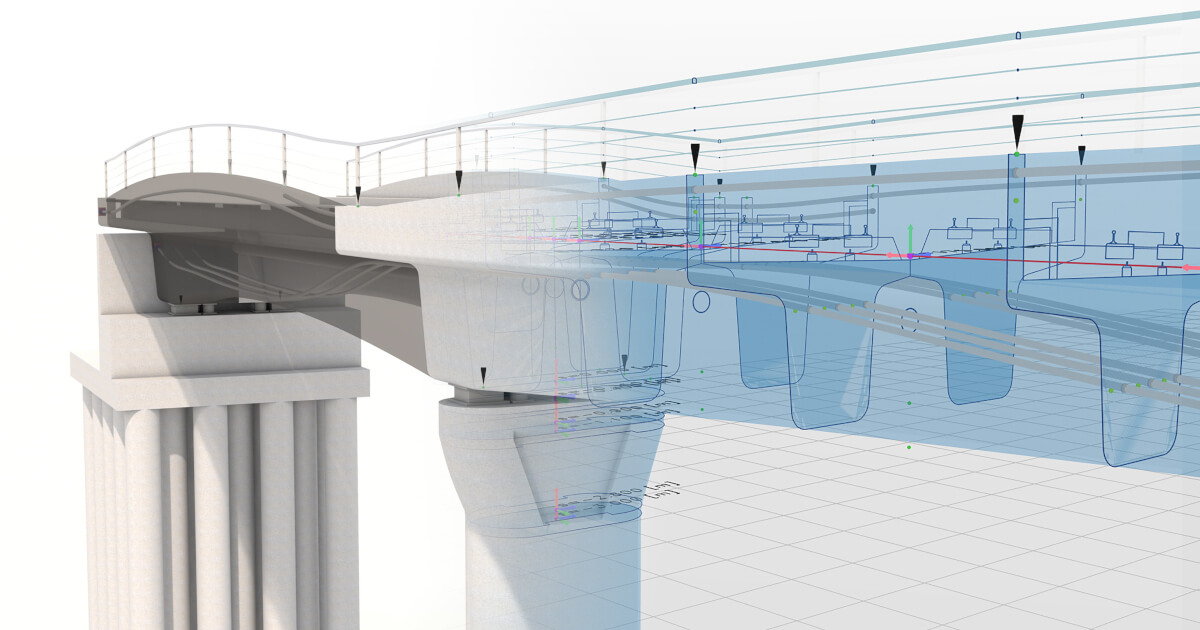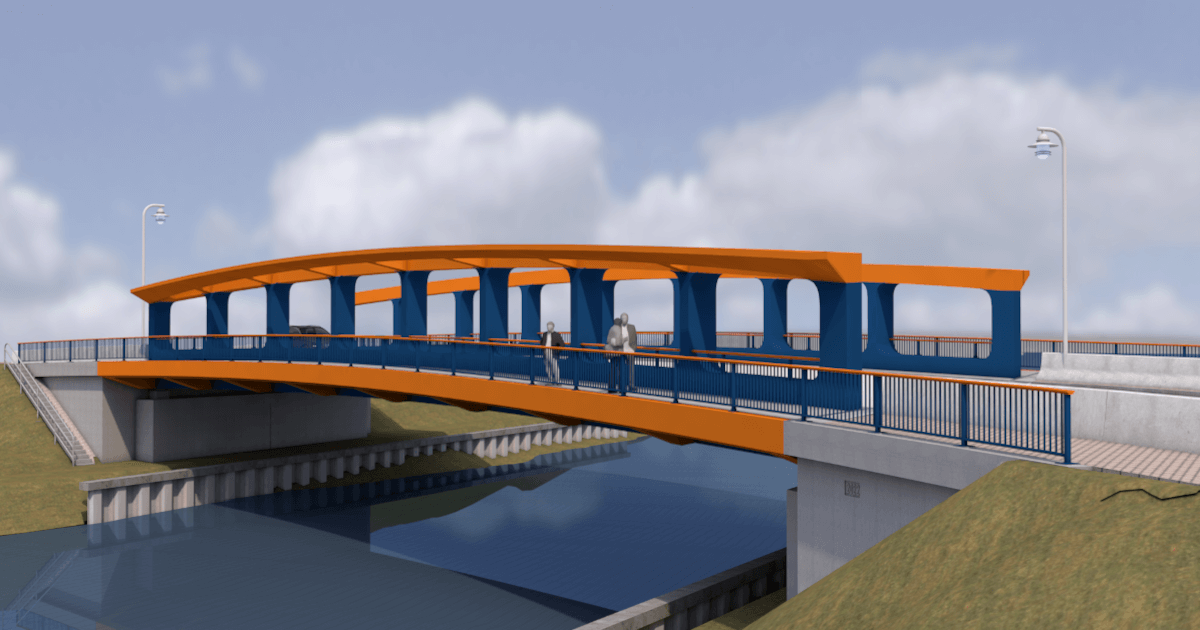In bridge design and construction, apart from the geometrical design, coordination work, and construction management, many other sophisticated design tasks are required which are performed by specialists. For example, structural analyses require experienced bridge engineers, and often additional help from experts to address unique challenges such as geotechnical and foundation issues, pre-stressing, or earthquake engineering. However, these disciplines often sit outside of a traditional BIM workflow and, as such, do not fully benefit from the enhanced efficiency, communication, and collaboration that BIM could provide.
Thus, being able to use the BIM process as a fully integrated planning procedure – including detailed structural analyses and assessment – and allowing all parties to collaborate on a project has exceptional value. By providing functionalities such as structural analysis and strength assessment, the BIM tool Allplan Bridge addresses this issue and extends the benefits of the BIM methodology to all parties involved on the project.
 © ALLPLAN
© ALLPLAN
Benefits of an Integrated BIM Approach
Efficient Structural Analysis
The detailed geometry of 3D models is not suitable for structural analyses, requiring simplifications to be made. Structural engineers undertake this analysis by considering the statically relevant relationships and the required accuracy of the calculations. As a result, design work is mostly carried out as two separate processes – the architectural design and geometric modeling using BIM, and, separately, the creation of the structural analysis model by the bridge engineer.
This duplicate modeling work can be avoided by automatically creating a relevant structural model from a parametric architectural model. Allplan Bridge provides this functionality, allowing the user to keep control over the created model and enforce deviations from the architectural model. The two models are interlinked, so any modification in the geometry is immediately updated in the structural model.
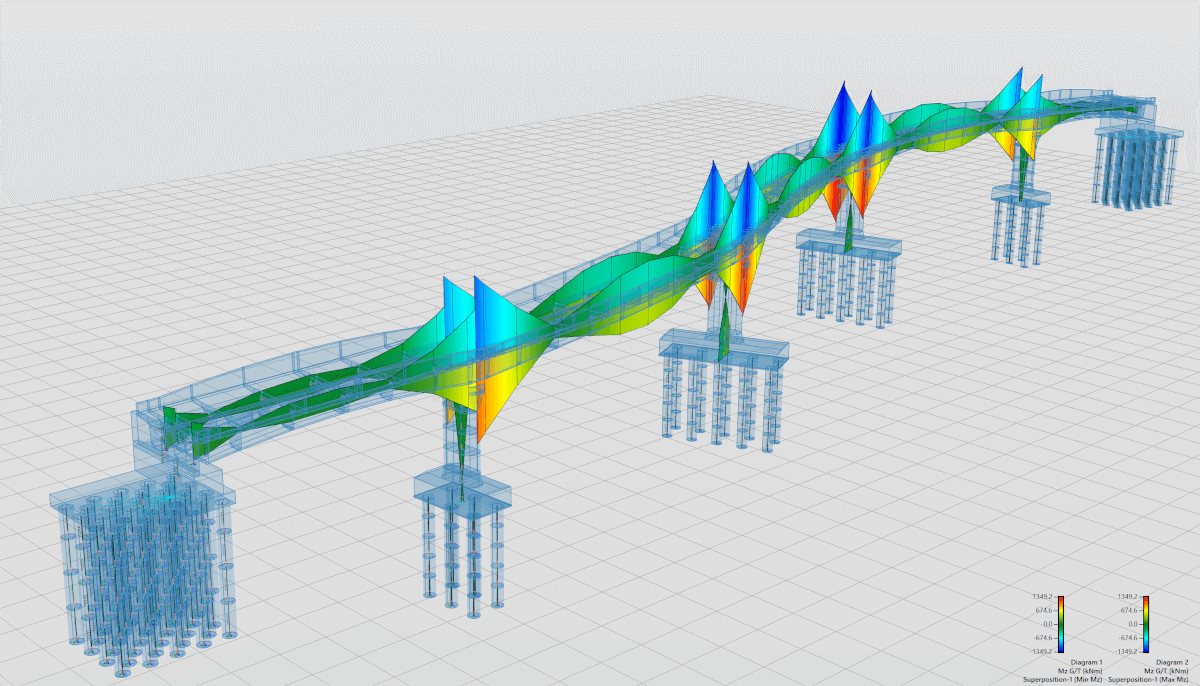 © ALLPLAN
© ALLPLAN
Improved Construction Simulation
The final bridge structure as well as the construction process governs load-bearing behavior. Therefore, in Allplan Bridge, the construction process in the BIM model is automatically derived into the analysis model as a timeline for performing the necessary static calculations. By simulating the construction process, stresses due to phased erections are considered, as well as time-dependent behavior due to creep, shrinkage and relaxation of pre-stressing steel. For pre-stressed concrete bridges, activities such as designing the tendon geometry and tensioning schedule to minimize pre-stressing losses are also included.
 © ALLPLAN
© ALLPLAN
Accurate Loading Conditions and Combinations
Loads such as self-weight, pre-stressing, or superimposed deadloads are automatically considered in the construction simulation. However, the effect of the different loads which will be applied over the bridge’s lifespan often require specialists, such as earthquake impacts. These are included in Allplan Bridge.
Calculating the bridge’s traffic load in accordance with design standards is a sophisticated process. In Allplan Bridge, this is achieved by evaluating the lane-related influence lines. Notional lanes along the bridge surface are defined in the bridge model for this purpose. To calculate the traffic loading on a certain lane, load patterns (called load trains) as defined by the design code are automatically placed along the lane in the relevant position. The values resulting from different load trains and on different lanes of a lane set are superimposed. Combining the results of different possible lane sets gives the final traffic load envelope.
For earthquake-susceptible regions, a dynamic analysis must be performed to determine the impact of these events. Allplan Bridge uses the multi-mode Response Spectrum Method for evaluating the effects of seismic loading. The solution consists of 2 separate tasks in the calculation procedure, firstly the determination of the relevant natural modes of the structural system using a subspace iteration scheme according to Bathe and secondly the evaluation of the response spectrum prescribed in the design code.
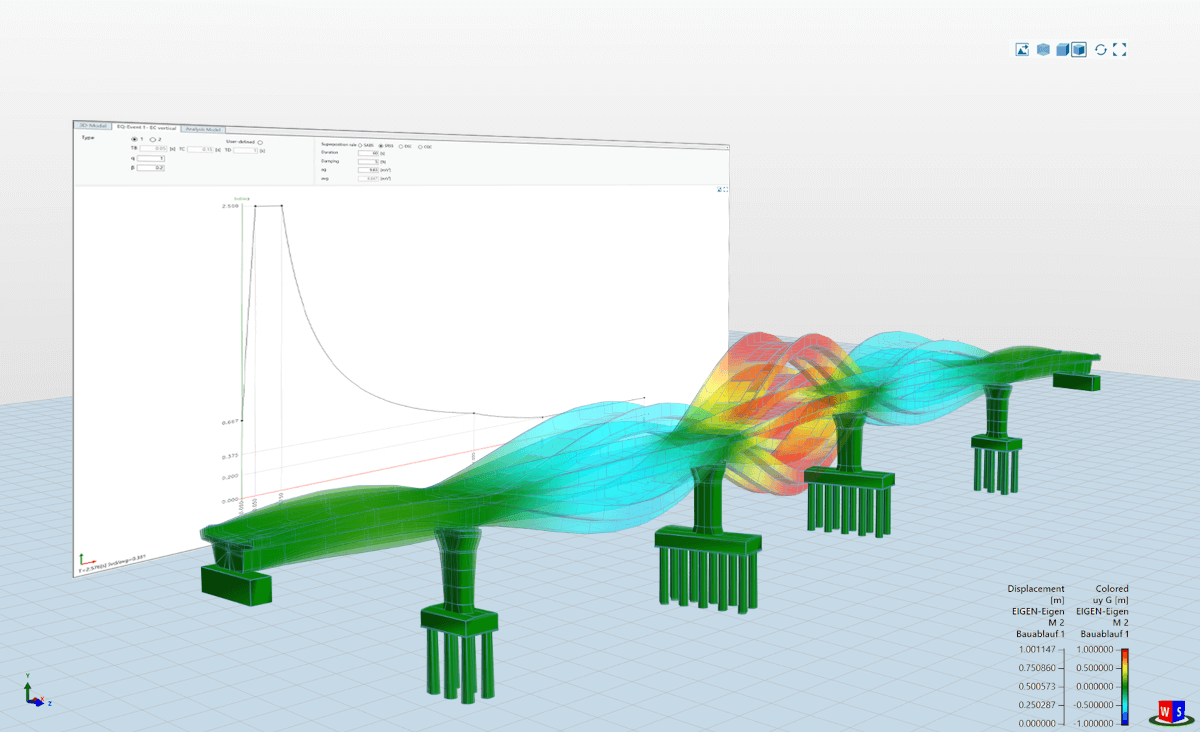 © ALLPLAN
© ALLPLAN
Structural Design and Assessment
Allplan Bridge improves the efficiency and effectiveness of both the design and BIM process. Once the structural analysis has been performed, proof checks in accordance with the relevant design code must be made for the serviceability limit state (SLS) as well as the ultimate limit state (ULS). Allplan Bridge includes intelligent tools for calculating these checks and much more, such as for undertaking complex calculations throughout the lifespan of the bridge, and investigating the shear resistance of pre-stressed concrete bridges.
For example, pre-stressed concrete bridges have many erection and service stages in which the structure must be analyzed and checked. The construction history and the effects of creep and shrinkage cause stress redistribution on both cross-sectional and structural levels. The stressing state immediately after completion of the construction (the initial stress state) is used for calculating the ultimate flexural resistance, as well as fatigue and serviceability checks. The calculation of the flexural resistance is complex, requiring the integration of the stress over the sectional area, and a non-linear analysis of the equilibrium equations of the cross-section.
Shear resistance must also be investigated for pre-stressed concrete bridges. For this, the Eurocode standard is based on a variable-angle truss model. Certain adaptations or interpretations of Eurocode provisions are needed for pre-stressed concrete design with respect to (i) the relationship between the shear strength and flexural lever arm, and to (ii) the calculation of tensile force in the longitudinal reinforcement due to shear.
For the case of SLS checks (such as stress limitation, crack width, decompression condition, and deflection control), the use of the initial stress state method is even more essential than in ULS checks because the initial stress state significantly influences the results. In accordance with the Eurocode standard, the serviceability conditions govern the cross-section design as the structure is subjected to the service load for most of its lifespan. Therefore, this check is particularly important and should not be ignored or replaced by an assessment of the ultimate capacity of the structure.
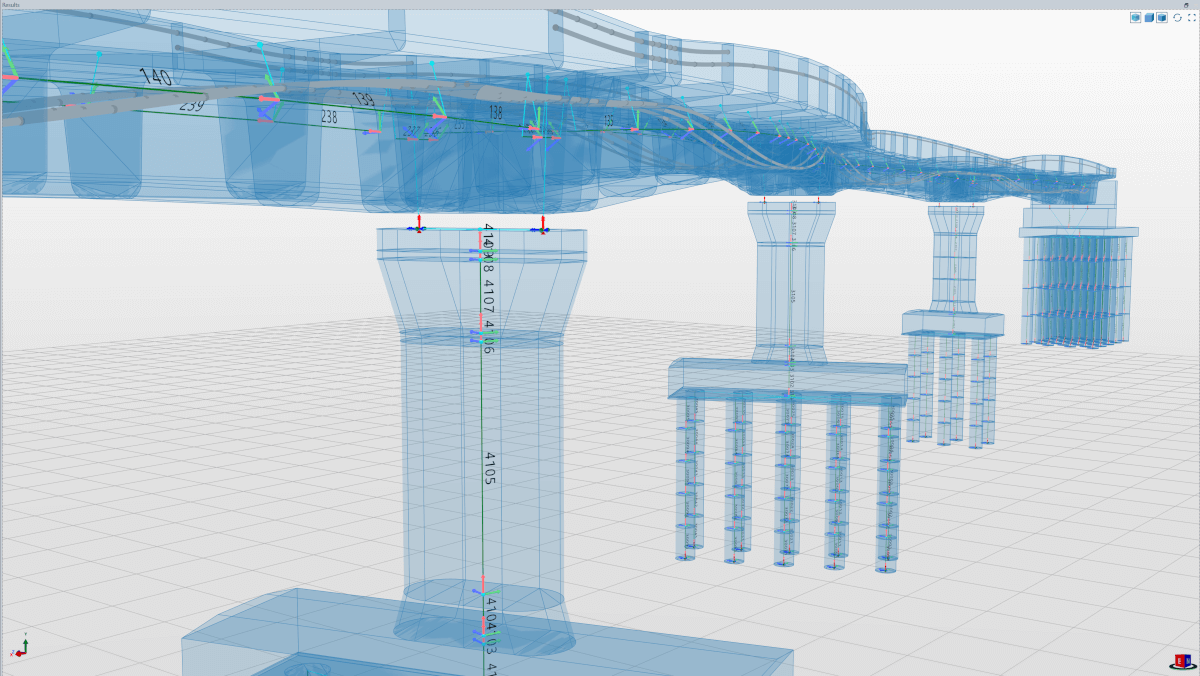 © ALLPLAN
© ALLPLAN
Streamlined Structural Design
Allplan Bridge is the world’s first integrated bridge design solution, mapping a complete BIM process for bridge projects. It not only streamlines a wide range of structural analysis tasks, it also helps improve collaboration amongst the entire team by integrating traditionally separate disciplines and structural analysis activities into the design workflow. This saves significant effort, time, and money, and gives engineers the tools they need to introduce more creativity and innovation into their projects.
Test the full version of Allplan Bridge 2022 now for free
